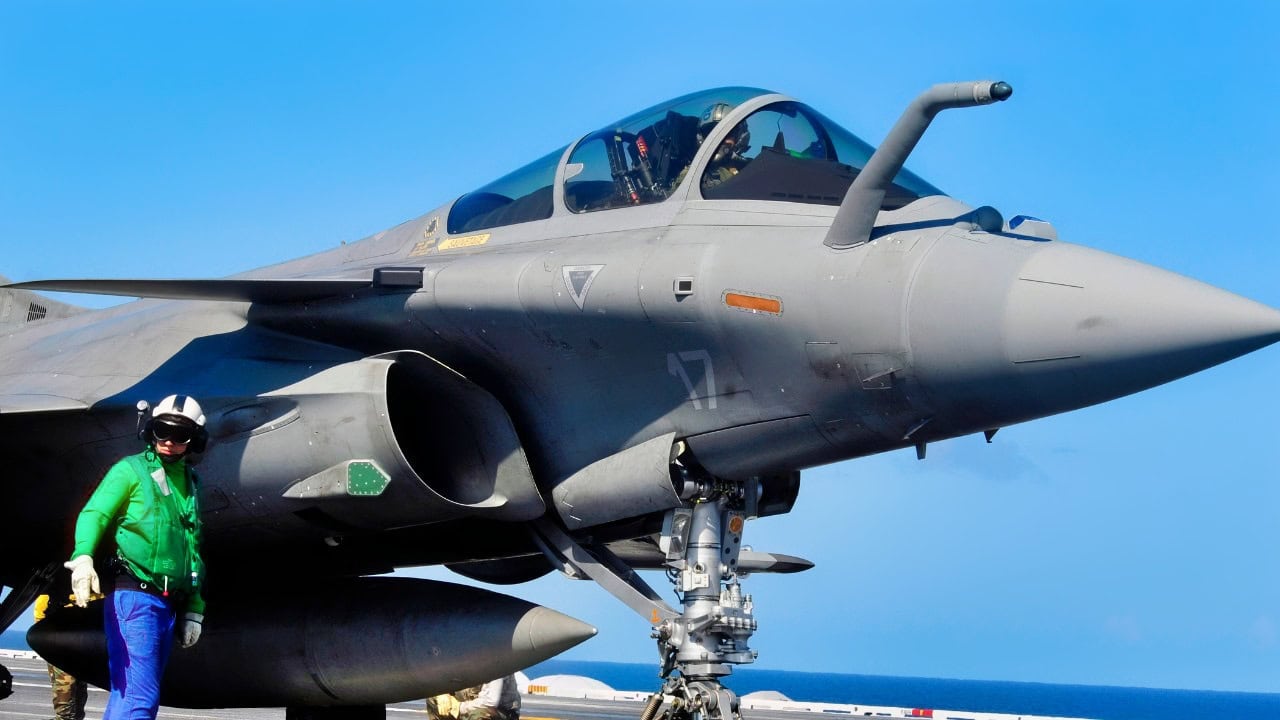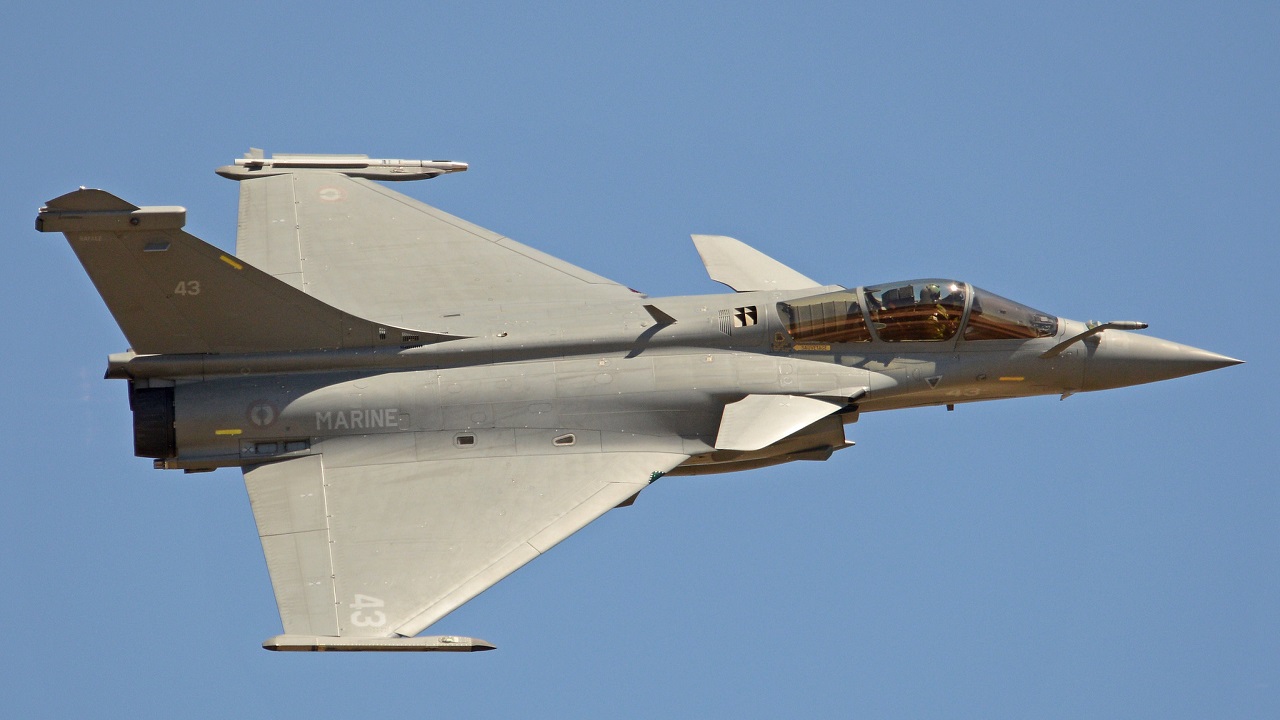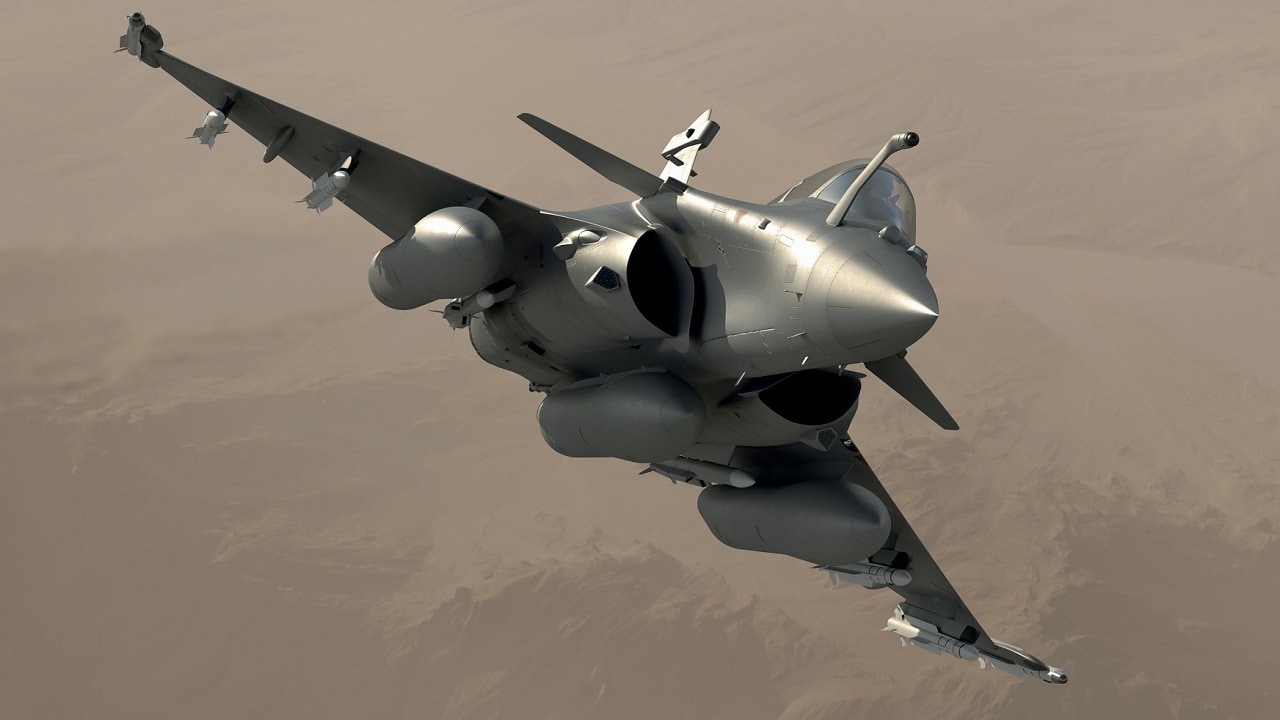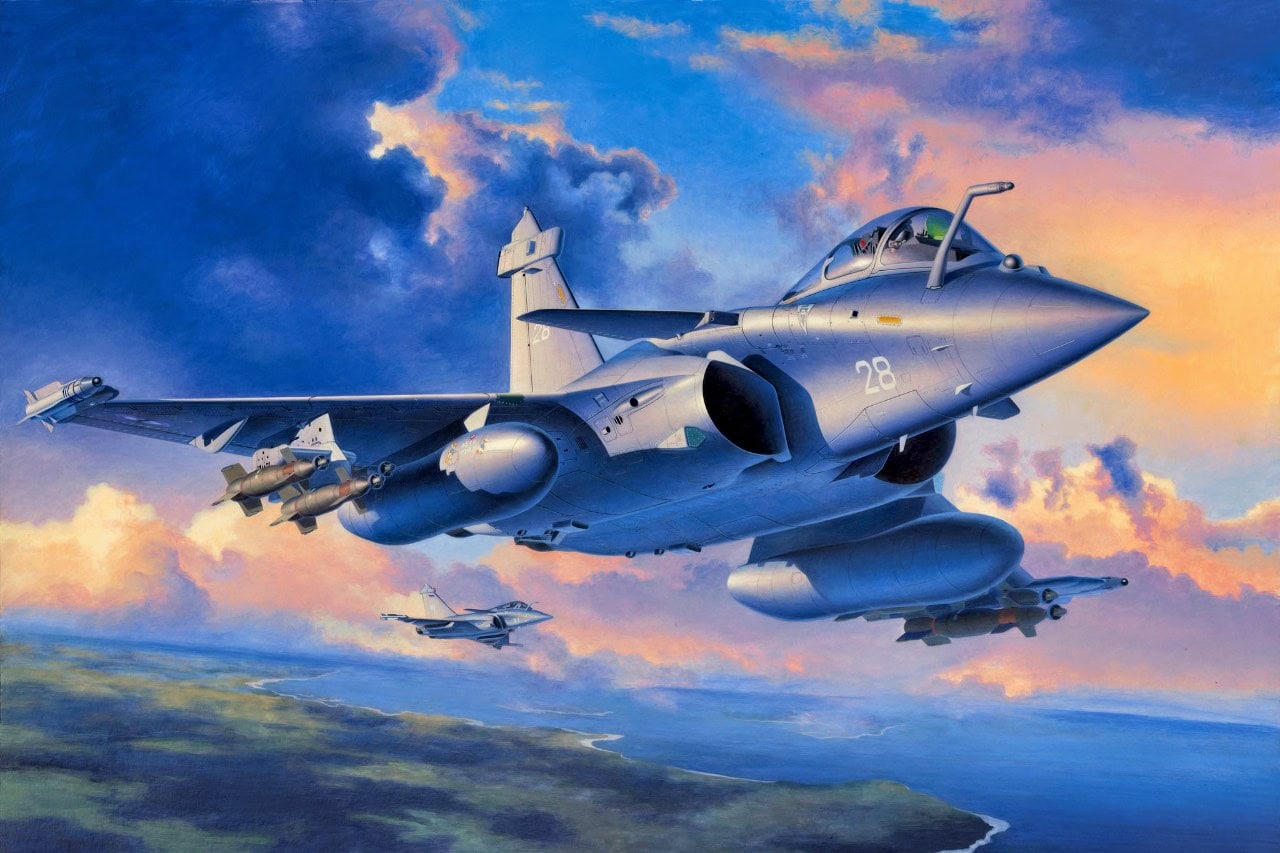In the 1980s, France was involved with a European consortium to build the next great European fighter. However, the French preferred a lightweight, multirole land and naval-based aircraft, while the British favored a land-based heavy long-range interceptor plane.
This requirement put too much strain on the project, with France withdrawing in 1985 and the other partners, the United Kingdom, Germany, and Italy, going on to make the Eurofighter Typhoon.
Dassault had been working on the ACX (Avion de Combat Experimental, meaning Experimental Combat Aircraft) project, initially codenamed Rapace (Bird of Prey), since the late 1970s.
By early 1980, ACX had been narrowed down to four configurations, two of which featured canards and delta wings that were eventually used on the Rafale. On April 13, 1983, it finally received the green light to build the prototype, which Dassault unveiled on December 13, 1985.
Budget cuts nearly ended the Rafale program with the end of the Cold War. However, France decided it needed “strategic autonomy” in this area, and it carried on the program, further testing in the 1990s, and finally entry into service in the early 2000s.
In this area, the French succeeded, as unlike other European fighters, the French built this aircraft entirely domestically. There are three primary variants: the Rafale C single-seat land-based version, the Rafale B twin-seat land-based version, and the Rafale M single-seat carrier-based version.
The Rafale’s Design Is Unique to France
The Dassault Rafale uses a delta wing with an active close-coupled canard to maximize maneuverability. The aircraft can withstand from −3.6 g to 9 g (a maximum of 11g can be reached in an emergency).
The RBE2 AA active electronically scanned array (AESA) radar now replaces the previous passively scanned RBE2. The RBE2 AA is reported to deliver a further detection range of 200 km, which allows the craft to search for and lock down targets in coordination with frontal “infrared search and track” sensors.
The Dassault Rafale is powered by two Snecma M88 engines, each capable of providing up to 50 kilonewtons (11,000 pounds-force) of dry thrust and 75 kN (17,000 lbf) with afterburners. The aircraft can reach a speed of Mach 1.8.
The engines feature a non-polluting combustion chamber, single-crystal turbine blades, powder metallurgy disks, and technology to reduce radar and infrared signatures. The M88 enables the Rafale to supercruise at Mach 1.4 while carrying four missiles and one drop tank.
The Rafale is typically equipped with 14 hardpoints for carrying various weapons and has a maximum external load capacity of nine tons. In addition to the above equipment, it holds the 30 mm GIAT 30 revolver cannon and can be loaded with a range of laser-guided bombs and ground-attack munitions.
Dassault Rafale: Foreign Sales Were Slow To Catch On
Despite its excellence as a multirole aircraft, the Dassault Rafale was very slow in generating foreign sales. But now sales are booming, resulting from France selling outside of Europe.
Besides France, the aircraft has been purchased by the air forces of eight countries, including Egypt, India, Qatar, the UAE, Greece, Croatia, Indonesia, and Serbia. The UAE placed the most significant order for 80 fighters in 2021. The surge in sales has been noteworthy and has kept the production lines busy.

080719-N-3218H-011
ATLANTIC OCEAN (July 19, 2008) A French F-2 Rafale fighter prepares to launch during combined French and American carrier qualifications aboard the aircraft carrier USS Theodore Roosevelt (CVN 71). This event marks the first integrated U.S. and French carrier qualifications aboard a U.S. aircraft carrier. The Theodore Roosevelt Carrier Strike Group is participating in Joint Task Force Exercise “Operation Brimstone” off the Atlantic coast until the end of July. (U.S. Navy photo by Mass Communication Specialist 3rd Class Christopher Hall/Released)

Operated by Flottille 12F, Aeronavale, based at Landivisiau.
Seen during a practice display routine at Zaragoza Air Base, Spain, during the 2016 NATO Tiger Meet (NTM).

Dassault Rafale. Image Credit: Industry Handout.
Dassault has boosted production to two aircraft per month, with the only holdup now being the supply chain. Some of the Rafale suppliers work for other industries and sometimes cannot find the financing to ramp up production.
The company believes it will soon attain a monthly production rate of 3-4 aircraft. The company may eventually open a second production line.
The Dassault Rafale has an excellent combat record, having been involved in airstrikes in Libya in 2011, airstrikes against ISIS in Syria, against al-Qaeda in Africa, and in Mali.
The Rafale, along with the US, shot down missiles and drones that Yemen used against Israel in 2024.
About the Author:
Steve Balestrieri is a 19FortyFive National Security Columnist. He served as a US Army Special Forces NCO and Warrant Officer. In addition to writing for 19FortyFive, he covers the NFL for PatsFans.com and is a member of the Pro Football Writers of America (PFWA). His work was regularly featured in many military publications

